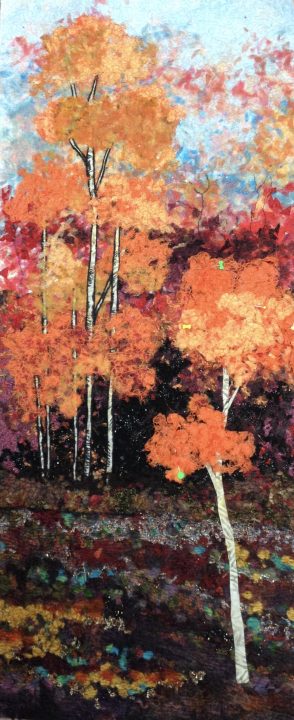What is Boro Stitching?
The raw simplicity and functional beauty of the boro artform is something that I’ve adored for some time. I get a lot of questions about its origins, practice, and what constitutes authenticity, so hopefully this will answer some of them.
Boro is essentially the practice of using a simple running stitch (a sashiko stitch) to reinforce a textile item using spare or would-be-discarded scraps of fabric. It is a practice that grew out of necessity in medieval Japan, and has evolved, four centuries later, into a distinctively gorgeous textile artform. Like sashiko itself, boro combines practical functionality with beauty.
Boro Stitching – Historical Background
‘Boro’ more or less translates as ‘ragged’ or ‘tattered’. For Japanese peasants of the Edo period, it was utterly necessary to get the maximum wear and use out of their textiles, so no scrap of fabric was ever thrown away. At the time, Japanese peasants (particularly in the north) didn’t have access to durable cotton fabric and had to make do with homespun hemp fabric, which would typically show signs of wear more quickly.
Using fabric scraps dyed with indigo or brown earthy tones, garments were continually mended and passed down over generations. Each additional scrap of fabric—with its own unique story—would come to map the family’s history and heritage. The evolution of patterns and motifs in the reinforcement stitching (sashiko) added beautiful decorative touches to these garments.
Boro Stitching – Philosophy
Central to boro is the concept of finding beauty in mending—that nothing should ever be wasted, and that imperfections have their own subtle and simple appeal.
Just as sashiko embroidery has become a popular worldwide textile craft, so has boro. It has transcended its origins to become a form of textile design and artistic expression. A number of influential Japanese sashiko artists are active in the creation and exhibition of some exquisite boro textiles.
Sashiko artist Keiko Futatsuya creates boro pieces with antique or vintage Japanese fabrics and vegetable dyed sashiko threads to capture that traditional ethos and feel. In 2016, Indigo Niche exhibited some of Keiko Futatsuya’s boro work at the Brisbane Craft and Quilt Fair, and it generated a lot of interest.
The popularity of boro stitching outside of Japan
The popularity of upcycling or upcycled clothing is testament to boro’s enduring global appeal.
I think the reason for the increased popularity has to do with a desire step outside of our consumer lifestyle and connect with something permanent. Modern life has an emphasis on using items and then discarding them, and the ethos of boro is in opposition to this.
What is ‘authentic’ boro?
So what is “authentic” boro? I’ve seen a lot of discussion and debate about this. On a technical level it’s admittedly very difficult to create genuine or authentic boro without decades, even centuries, to allow the fabric to colour-fade and to have been well-used in everyday life.
My creative process draws a lot of inspiration from the women of that period, and how they were able to apply elegantly simple aesthetics with what they had. I think it’s very important to have an understanding of where sashiko and boro came from, and not just how they developed, but why.
I personally feel that authenticity can come from respecting the traditional ethos when working on boro textiles—every piece of fabric you choose to include has its own history, and that mending and imperfection have a role in the creation of beautiful boro pieces.
Things to remember for your own boro stitching work
1. Know (love) your fabric.
2. Understand the beauty in mending.
3. Use a quality sashiko thread.
4. Be creative.
Some Links
If you’re ever in Tokyo, this museum is an absolute must.
http://www.amusemuseum.com/english/boro/index.html
Keiko Futatsuya is an incredible boro and sashiko textile artist and I cannot recommend her work highly enough. Follow her on Instagram here:









7 Comments
Wow 😳! Beautiful.
enjoyed your display. So elegant.
Thank you, Jo
Hi Sue can you tell me is starting with a knot acceptable or I was told to backstitch to start and end on backing fabric?
Diane. I think starting with a knot is perfectly acceptable and fits in well with the boro philosophy!!!! I do it.
Do you typically use a single or double thread?
[…] Boro Textiles – An Introduction […]